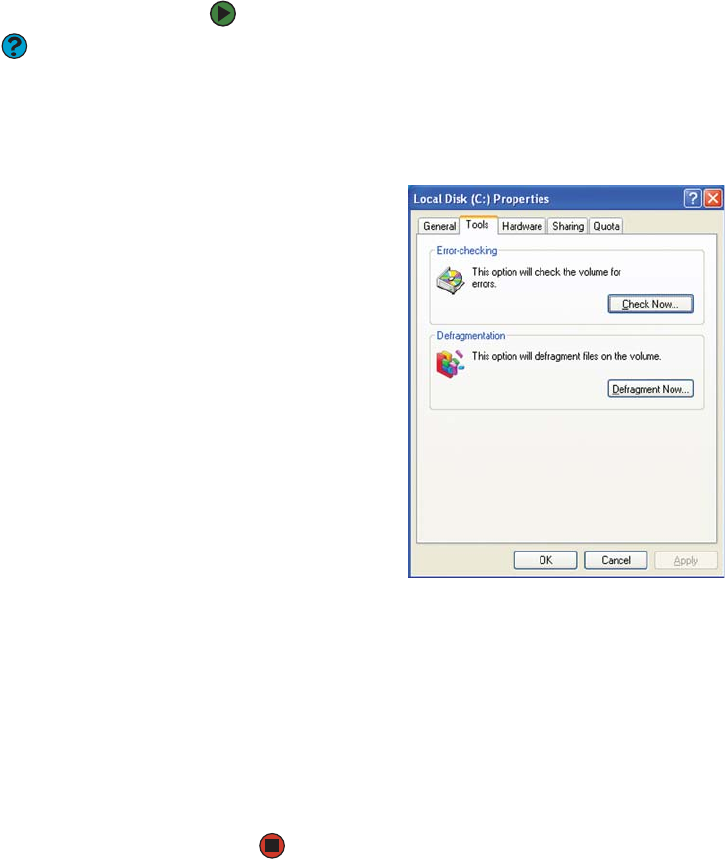
Managing hard drive space
www.gateway.com
123
To check the hard drive for errors:
Help & Support
For more information about checking the
hard drive for errors, click Start, then click
Help and Support. Type the phrase
checking for disk errors in the
Search box, then click the arrow.
1 Click Start, then click My Computer. The My Computer window opens.
2 Right-click the hard drive that you want to check for errors, for example
Local Disk (C:), then click Properties. The Properties dialog box opens.
3 Click the Tools tab.
4 Click Check Now.
5 Click the options you want to use, then click Start. For help, press F1.
Windows checks the drive for errors. This process may take several
minutes. After Windows has finished checking the drive for errors, it
provides a summary of the problems that it found.
6 Correct any problems that are found by following the on-screen
instructions.
7 Click OK.
Defragmenting the hard drive
When working with files, sometimes Windows divides the file information into
pieces and stores them in different places on the hard drive. This is called
fragmentation, and it is normal. In order for your computer to use a file, Windows
must search for the pieces of the file and put them back together. This process
slows the hard drive performance.
The Disk Defragmenter program organizes the data on the drive so each file is
stored as one unit rather than as multiple pieces scattered across different areas
of the drive. Defragmenting the information stored on the drive can improve
hard drive performance.
While the Disk Defragmenter program is running, do not use your keyboard or
mouse because using them may continuously stop and restart the
defragmenting process. Also, if you are connected to a network, log off before
starting Disk Defragmenter. Network communication may stop the
defragmentation process and cause it to start over.
